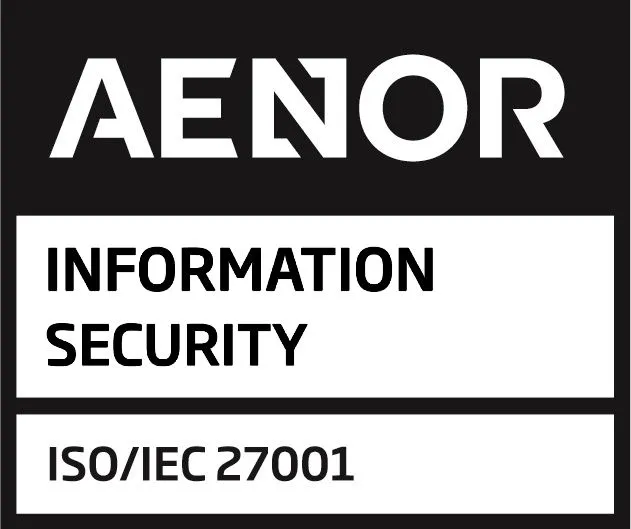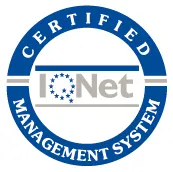
Il burnout dei dipendenti, noto anche come stress da lavoro, è diventato oggi una delle principali preoccupazioni per le aziende e le organizzazioni. Riconosciuta dall’Organizzazione Mondiale della Sanità (OMS) come fenomeno occupazionale, questa malattia legata al lavoro influisce non solo sulla salute mentale e fisica dei dipendenti, ma anche sulla produttività e sui risultati delle aziende.
Questo articolo è un’esplorazione approfondita del burnout dei dipendenti. Ne analizzeremo le cause, le conseguenze e, soprattutto, come prevenirlo nella tua organizzazione, al fine di promuovere il benessere dei dipendenti e garantire il successo dell’azienda.
Table of Contents
Che cos’è il burnout dei dipendenti?
Il burnout è uno stato di esaurimento fisico, emotivo e mentale causato da uno stress prolungato sul lavoro. I dipendenti che ne soffrono spesso si sentono demotivati, sovraccarichi e scollegati dalle loro responsabilità lavorative.
I sintomi del burnout
- Stanchezza estrema: sensazione di costante stanchezza fisica e mentale.
- Mancanza di motivazione: perdita di interesse per le mansioni lavorative.
- Prestazioni ridotte: difficoltà a concentrarsi e a svolgere le mansioni in modo efficace.
- Irritabilità: Sbalzi d’umore e conflitti interpersonali sul lavoro.
- Problemi di salute: Mal di testa, insonnia e disturbi digestivi.
I dati chiave sul burnout
- Uno sondaggio condotto da Deloitte nel 2018 ha rilevato che il 77% dei professionisti ha sperimentato il burnout nel proprio attuale lavoro.
- Secondo uno studio condotto dall’International Stress Management Association, il 60% dei dipendenti di tutto il mondo ha sperimentato il burnout a un certo punto della propria carriera.
- Nel 2020, un sondaggio di Gallup ha riportato che il 76% dei dipendenti sperimenta il burnout sul lavoro almeno qualche volta. Inoltre, i dipendenti affetti da burnout hanno il 63% di probabilità in più di prendersi un giorno di malattia e un valore 2,6 volte maggiore di cercare attivamente un altro lavoro.
- Secondo IPSOS, l’eccessivo carico di lavoro e i cattivi stili di gestione contribuiscono in modo significativo allo stress sul posto di lavoro e al burnout.
La prevenzione inizia con l’azione. Fai il primo passo oggi stesso per proteggere il tuo team dal burnout.
Le cause principali del burnout dei dipendenti
Employee burnout does not come out of nowhere; it is usually the result of several work-related factors ans several HR problems. The main causes usually include:
- Carico di lavoro irrealistico: esigenze eccessive sui dipendenti senza che vengano fornite risorse adeguate.
- Percepita mancanza di controllo: la sensazione di non avere l’autonomia di prendere decisioni.
- Ambiente di lavoro tossico: scarse relazioni interpersonali o leadership inefficace.
- Mancanza di premi o riconoscimento: nessuna valorizzazione o ricompensa per gli sforzi compiuti.
- Scarso equilibrio tra lavoro e vita privata: orari di lavoro lunghi che limitano il tempo libero al di fuori del lavoro.
Impatto del burnout sul posto di lavoro
Lo stress legato al lavoro non riguarda solo il singolo lavoratore interessato, ma ha anche gravi conseguenze per le aziende:
- Bassa produttività: i dipendenti che soffrono di burnout tendono a lavorare più lentamente e a commettere più errori.
- Aumento dell’assenteismo: le assenze per malattia dovute allo stress diventano prevalenti.
- Elevato turnover del personale: i dipendenti insoddisfatti cercano opportunità migliori altrove.
- Danno alla reputazione: un ambiente di lavoro scadente può danneggiare la marca del datore di lavoro.
Come individuare e affrontare il burnout dei dipendenti
Burnout does not appear from one day to the next. It is a silent process that accumulates little by little: demotivation, persistent fatigue, emotional disconnection, cynicism… Detecting it in time is key to being able to act before burnout affects the mental health of employees and the performance of teams.
That is why one of the most powerful tools that organisations have to prevent burnout is something as simple – and at the same time as profound – as listening. Active, continuous and structured listening through surveys and indicators that allow us to take the real pulse of the team.
Vip Connect, our all-in-one internal communication platform, brings different tools that help companies to detect trends and act in time:
- Work climate surveys: they help to identify patterns of dissatisfaction, demotivation or overload before they become major problems. It is also a means of measuring engagement and happiness at work.
- Specific burnout indicators: such as wellbeing thermometers or questionnaires focused on fatigue, stress and emotional balance, allow early warning signs to be detected.
- eNPS (Employee Net Promoter Score): this metric allows us to understand the level of commitment of teams and detect whether the emotional connection with the organisation is weakening.
- Communication mailboxes with HR (also anonymous): having a direct and confidential channel allows employees to express concerns or discomfort without fear, helping to detect cases of burnout that do not always surface in formal surveys.
What if burnout is already here? How companies should act
Prevention is ideal, but it is also key to know how to act when burnout is already present in the team. Ignoring the signs or minimising the problem only aggravates the situation: low productivity, higher turnover, increased absenteeism and, above all, a serious deterioration in people’s emotional well-being.
Managing burnout requires organisational courage and a real commitment to mental health. It is not enough to offer fruit in the office or a meditation subscription. It requires a structured strategy, with actions that address the real causes of burnout.
Here are some actions to address burnout in the organisation
- Talking about it, without taboos: Normalising dialogue about mental health helps people not to hide their discomfort. Leaders should be the first to open up this space.
- Making times and workloads more flexible: Reviewing objectives, redistributing tasks and offering breaks or rest days can be fundamental to cut the spiral of burnout.
- Professional support: Facilitating access to psychological support or individual coaching can make a big difference in the employee’s recovery.
- Train leaders in emotional management: Managers must be prepared to detect signs of burnout and act empathetically and quickly.
- Review processes and culture: Often, burnout is not a problem of the employee, but of the environment. Rethinking the culture of ‘always being available’ or excessive meetings is also part of the solution.
Crea spazi in cui il tuo team possa parlare. Le mailbox di comunicazione possono essere il tuo miglior alleato contro il burnout.
Storie di successo: aziende che combattono il burnout
Alcune organizzazioni hanno introdotto misure innovative per combattere il burnout dei dipendenti e migliorare la loro soddisfazione lavorativa:
- Google: Offre laboratori di mindfulness e spazi di relax appositamente progettati all’interno dei suoi uffici.
- Salesforce: Ha implementato una settimana lavorativa di 4 giorni per incoraggiare il riposo e la produttività.
- Vip District: Offre vantaggi esclusivi attraverso la sua piattaforma di smart engagement, compreso l’accesso a sconti e servizi progettati per ridurre lo stress finanziario ed emotivo.
Strategie di prevenzione del burnout dei dipendenti
Preventing burnout requires a comprehensive strategy that combines individual and organisational actions. Here are some key recommendations.
Recognition against burnout at work
Burnout does not always come from an excessive workload. Often, it stems from a quieter but equally dangerous feeling: feeling that effort does not matter. When people don’t feel valued, their motivation drops, commitment wanes, and emotional exhaustion sets in.
A joint study by Gallup and Workhuman (2024) found that 57% of employees who receive frequent feedback from co-workers are less likely to experience burnout.
Although feedback often comes from team leaders, the reality is that recognition occurs more frequently among peers. Encouraging appreciation to flow in a natural and personalised way not only strengthens the bond between colleagues, but also reduces cumulative stress levels.
Moreover, it is not just about recognising great achievements. A big opportunity for companies lies in broadening the reasons why a person is valued. Only 37% of employees say that non-performance-related aspects such as attitude, empathy or emotional support are recognised in their company. And that can be a mistake. When these human qualities are also recognised, employees are 67% more likely to be engaged and 74% more likely to feel connected to the organisation’s culture.
Authentic, consistent and well-directed recognition can act as an emotional barrier to burnout. People not only want to be evaluated on their performance, but also to feel seen for what they contribute as individuals. And that starts with building a culture where giving feedback is not just a task for managers, but a practice shared by all.
Il riconoscimento non è un extra, è una necessità. Crea il tuo programma di recognition e combatti il possibile burnout alla radice.
How do you incorporate recognition into your day-to-day work?
One way to make recognition not a one-off, but a living part of the company culture, is to adopt structured recognition programmes as a pillar of HR. Integrating them into the employee experience helps appreciation flow naturally across all departments. This not only avoids burnout: it builds more committed teams, stronger relationships and a work culture where each person feels that their effort is worthwhile.
At Vip District, we help hundreds of companies to incorporate recognition as a preventive measure against burnout. We tell you how:
- With Vip Incentives you can set up a personalised recognition and incentive programme for your company. You can run campaigns with challenges, with the possibility of segmenting by department or location and following different criteria. For each completed challenge, employees receive points that they exchange for prizes from a wide catalogue. In addition to recognising business-related milestones, many of our clients create specific campaigns to recognise personal milestones such as work anniversaries, birth of a child, marriage, graduation, among others. Find out more about Vip Incentives.
- Vip Award is the peer-to-peer recognition platform, or coworker feedback platform. A real wall of praise where employees can dedicate a few positive words to colleagues from any department. Each company can define the criteria by which feedback is given, and thus align with corporate values. The platform also features AI moderation to ensure that everything follows the guidelines of respectful language defined by the company. With a ranking, HR can identify the most valued employees among their peers and attitudes. Find out more about Vip Awards.
Other actions to prevent burnout
Although recognition plays an important role in burnout prevention, there are many things companies can do to join forces and really armour themselves against absenteeism. Here are a few more ideas:
1. Promuovi una cultura del benessere
- Favorisci un ambiente di lavoro positivo, in cui i dipendenti si sentano apprezzati e sostenuti.
- Implementa programmi di salute mentale e benessere emotivo, come l’accesso a terapeuti o sessioni di mindfulness.
2. Rivedi i carichi di lavoro
- Valuta le responsabilità di ciascun dipendente e assicurati che i carichi di lavoro siano adeguati.
- Fornisci strumenti e risorse che aiutano i dipendenti nelle loro mansioni.
3. Offri modalità di lavoro flessibili
- Implementa orari di lavoro flessibili o il lavoro a distanza, in modo che i dipendenti possano raggiungere un sano equilibrio tra lavoro e vita privata.
- Fai in modo che prendersi delle ferie per esigenze personali sia facile, normale e privo di ripercussioni negative.
4. Forma i leader
- Educa i manager alla leadership empatica e alla gestione dello stress, in modo che possano identificare e affrontare i primi segnali di burnout.
- Incoraggia il riconoscimento e il feedback positivo.
5. Incoraggia pause regolari
- Crea spazi per pause attive durante la giornata lavorativa.
- Incoraggia i dipendenti a prendere i giorni di ferie assegnati e a staccare veramente dal lavoro.
Dai priorità al benessere per evitare il burnout
Il burnout è una realtà moderna che non può essere ignorata. Il suo impatto è profondo sia per i dipendenti che per le aziende. Prevenirlo richiede impegno, azioni concrete e un’attenzione al benessere. Implementando misure attentamente studiate per ridurre il burnout, non solo si migliorerà la qualità di vita dei dipendenti, ma si rafforzerà anche la cultura organizzativa e si aumenterà la produttività aziendale.
Prevention starts with action. Take the first step today to protect your team from burnout.









